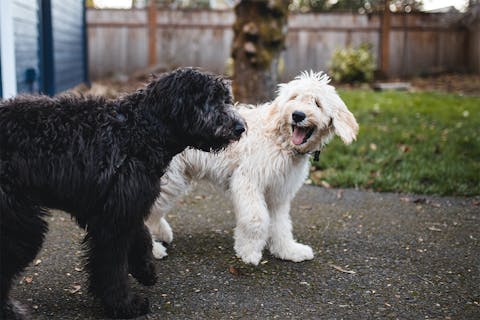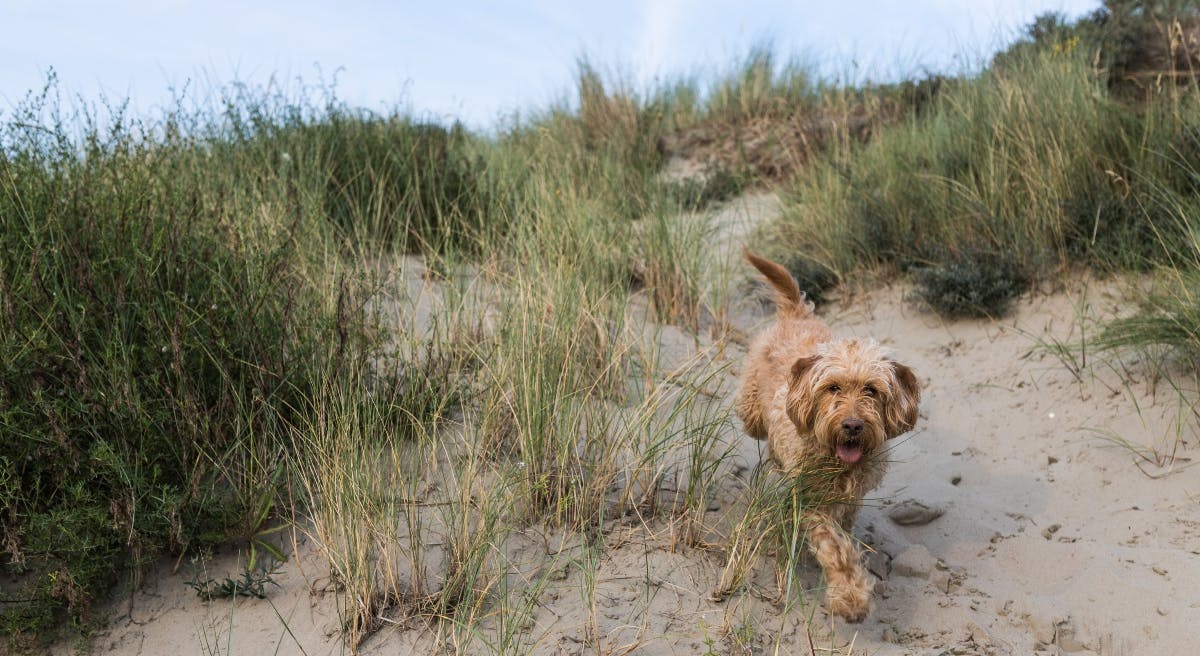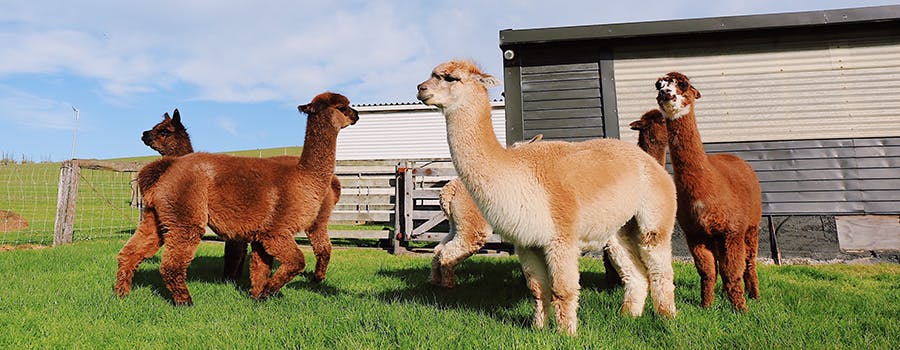Updated 16 June 2025
Want to start running with your dog, but not sure where to start? You’re in the right place - explore below for tips on running with a dog lead, advice for running with a dog, must-have running gear and more. So whether you’re planning a jog with your dog or you want to get into canicross, take a look below for a safe and enjoyable run.
Benefits of running with your dog
It’s no secret that pet ownership does wonders for us humans - in fact, a study found that dog owners are 77% more likely to stay active than those without a dog. But what are the benefits of exercising with a four-pawed companion? Well if you’re thinking about running with your dog, explore a few of the benefits below for a touch of pre-run inspiration.
- Avoiding behavioral problems. Running with your dog can help to avoid (and in some cases, address) behavioral issues, including stress, boredom, destructive behavior and separation anxiety in your dog.
- Bonding. Running with your dog is a great bonding opportunity - building up positive experiences with your dog enforces your great relationship.
- Motivation. Running with dogs is a great motivator for pet owners to exercise - even on days where you don’t feel like running, your dog likely will.
- Companionship. Running can get lonely, but having a dog by your side provides the company you need to get through a difficult run.
- Rest. Most of the time, dogs instinctively know when they’ve had enough exercise - with no fitness agenda, our dogs can help to remind us to pause, take a breath and soak up the scenery before finishing our run.
- Socializing. Ever found that having a dog with you helps to spark up conversation with like-minded others? The same applies to running with your dog - try having a jog with your furry friend - you never know what friendships you’ll make along the way.
Merili Freear - author, ultrarunner & running coach at Merili Runs shared her thoughts on the benefits of running with your dog, “For humans, it boosts motivation, adds joy to your routine, and helps you build consistency - especially if you’re combining walks and runs into one outing. For dogs, it provides both mental and physical stimulation and strengthens the bond with their owner.”
Trending posts
Purr-use some of the top blogs our members have been loving this month- Top male dog names for your new furry friendGot a new furry family member in your pack? Check…

- Top female dog names for your new fluffy palWelcoming a new pooch into your family? Explore…

- 250+ gray cat names your silver feline will loveRecently welcomed a fluffy gray bundle of joy into…

- What are normal pet sitting rates?Discover the average pet sitting rates for animals…

- Unique dog names to stand out from the packDare to be different with our list of the best…

Tips for running with a dog lead
Leash running with a dog takes a bit of research and patience - find a few tips below for running with your dog on a leash, and the equipment you’ll need to stay safe.
Invest in a canicross dog harness
It’s vital you don’t run with your dog in a collar - if they come to an abrupt stop, a collar could cause choking, or your dog to slip out. Instead, opt for a harness that’ll allow for more security and less impact on your dog’s body. Running with a dog harness means you don’t have to worry about your dog escaping, or choking if they change directions or stop suddenly.
When it comes to choosing a canicross harness, it’s worth noting that a long harness is more suitable for dogs that sometimes pull, as they distribute the load further across the body. To find the right harness for your dog, head to your local apparel store for a fitting.
Head Canine Fitness Coach at Pant and Wag, Sean Prichard, shared his thoughts on why running with a dog harness is so important:
“I always recommend the dog wear a padded harness which will dissipate pressure points (unlike a collar which puts all of the pressure on the dog's neck) and reduce chafing.”
Consider a harness for you
Human canicross harnesses sit on the pelvis, which is a strong part of the body that can take the load of a pulling dog. By opting for a harness that attaches to the dog leash, you can run hands-free, so running with your dog doesn’t have to affect your form.
Consider a bungee leash
Unlike a traditional dog leash, a bungee leash is springy which helps to absorb the shock on both you and your pooch as you run. The length of the bungee leash you’ll need depends on your dog’s size and height, so head to your local pet shop to find the right leash.
Top tips for running with a dog: how to run with a dog
Ready to prepare for a run with your dog? Follow our top tips below to make sure your run is both enjoyable and safe for you and your furry friend.
Consider your dog’s breed
Not all dogs are built to run long distances, as Angela - Head of PR & Charity Partnerships at TrustedHousesitters explains,
“Certain breeds are naturally better suited to running due to their energy levels and physical build. High-energy breeds like Border Collies, Australian Shepherds, and Labradors are great for long runs, while muscular breeds like Greyhounds are best for short bursts of speed.”
Short-nosed brachycephalic breeds like Bulldogs, Pugs, and Shih Tzus aren’t the ideal running companions. Their shorter snouts make breathing during vigorous exercise a challenge, so they’re better suited to gentle walks. With this in mind, be sure to consider the best dog breeds for running partners before adopting a dog, or taking your pet out on a run.
Consider your dog’s age and health status
Even if your dog is a suitable breed for running, take their age and health into account before planning a run. Puppies shouldn’t run until their bones are fully developed - which is usually at around 18 months old.
Certified Running Coach, Amanda Grimm at We Run shared a few thoughts on this with us, “Your dog’s breed and age will play into whether it would be a good idea, as well as their physical fitness and any medical conditions. Check with your vet if you have any doubts.”
Ensure they’re leash-trained
Keep the phrase ‘don’t run before you can walk’ in mind when planning a run with your dog. Ensure that your pooch is fully leash-trained and can respond to basic commands before considering a run together. Once they can heel on a leash during a walk, they’ll be more likely to behave on a run. Dogs that pull while walking should be trained to walk calmly before running with you - for their own safety and yours.
Plan your run
Once you’re sure your running buddy is in tip-top condition for a run, you should plan your route ahead. Here are a few things to consider:
- The terrain. Start with easy terrain to get your canine companion used to running with you, considering whether they’ll fare better on a pathed, flat route to begin with.
- Check local regulations. It’s up to you whether you decide to run on or off-leash with your dog, but always follow local restrictions and put your dog on a suitable leash for running when in an on-leash zone.
- Consider garbage stops. Plan your running route around where the garbage cans are located to avoid running with full poop bags for too long.
- Consider water sources. While it’s best to avoid running in hot weather with your dog, consider passing by a lake or river where your dog is allowed to take a dip and cool down.
Take it gradually
The key to running and jogging with a dog is to take it slow. Gradually increase their endurance before embarking on longer runs, and give them plenty of time to rest and recover. Most importantly, if your dog doesn’t seem to enjoy running, don’t push them. Pay attention to signs they’re uncomfortable - such as pinned-back ears - let them set the pace, and make sure the outing is fun for both of you.
Understand your dog’s cues
It’s vital that owners running with their dog understand their dog’s communication signals. For example, if your dog is excessively panting, it’s a sign they’re suffering from heat exhaustion. And if they seem disinterested while you’re getting yourself or your dog ready for the run, it’s a sign they’re not so keen to join you. Whereas, if their tail is wagging, their eyes are bright and their ears are forward (not back), then it’s a sign they’re engaged and happy to be running with you.
Avoid running with headphones
Ditch the headphones to stay fully aware of your surroundings, especially when visibility is reduced. You’ll need to listen out for approaching traffic, potential hazards, or your dog trying to get your attention. If you prefer having something to listen to, try bone-conducting headphones – these let you enjoy music or a podcast while still staying in tune with your surroundings.
Avoid running in hot weather
When it’s too hot for your dog, opt for an early morning or later evening run to avoid heat exhaustion in both yourself and your dog. Avoid running in the open sun, and instead plan a route that’s shaded and passes by a dog-friendly water source.
One of our top safety tips for running with your dog is to know the signs of heat exhaustion in dogs:
- Excessive panting
- Foaming at the mouth
- Difficulty breathing
- Drowsiness
- Lack of coordination
- Shaking their head
- Vomiting
- Reddened gums
“Running with your dog should be a mutually beneficial experience all year round, which is why pet owners need to take additional precautions, so they can continue on the hobby they love.” - Angela - TrustedHousesitters Head of PR & Charity Partnerships
Follow local dog restrictions and running etiquette
- Pack poop bags, always pick up after your dog and plan your route around garbage cans to make sure you can always dispose of your rubbish properly.
- Always keep your dog on a leash when local regulations require you to do so.
- Only run with your dog if they’re fully recall trained.
- Be aware of ground nesting birds and livestock, keeping your dog on a leash in these areas.
- Avoid conflict with other dogs by keeping your pooch on the far side, and positioning yourself between other dogs and your own. This can help to avoid conflict, as well as your dog’s temptation to have a sniff and pause the run.
Plan yours and your dog’s running recovery
Not only do you need to plan your run, but you should also be prepared for your dog’s recovery. Have a snack ready, provide dinner on time and make sure your dog stays hydrated before, during and after the run. You could also consider giving your dog a gentle massage to help ease any post-running muscle soreness.
Learn command cues for running with your dog
When training your dog to run with you, consider the cues that would help make the run easier and safer for your canine companion. Learning the right dog cues can help to avoid conflict with other dogs, physical obstacles, and pulling on the leash. Here are a few cues you could teach your dog before running:
- “Steady”
- “Stop”
- “Leave it”
- “Heel”
- “On by”
- “Left” and “right”
Stock up on essential gear for running with your dog
Having the right running equipment can be the difference between a good and a bad jog with your dog. Below find a few prompts and things you might need to add to your running shopping list.
- Running trainers. Invest in running-specific trainers - try them on in the shop and you’ll thank yourself later.
- Clothing. Make sure you’re got running apparel that’s right for the conditions you’ll be running in. Consider shorts, leggings, long-sleeved shirts, or even gloves and a hat. Speak to your local running retailer and get a specialist recommendation for your run.
- Running pack. If you’re running with your dog, you’ll likely need a running pack to store fresh water, snacks, a canine medical kit and a dog water bowl.
- A running leash and belt. Whether you opt for a bungee leash, a hands-free waist lead or a canicross belt, you’ll need to choose an option that’ll keep both you and your dog safe during a run.
- Reflective gear. If you’re running in the early hours or late at night, be sure to wear reflective clothing and stock up on LED or reflective accessories for your dog.
Check with pet parents
If you’re a pet sitter, it’s vital that you only run with their dog if it’s something they’ve done before, and they’ve given you permission to do so. Generally, avoid running with a dog you’re house sitting unless it’s something you’ve explicitly planned and agreed with the owners.
Running with a dog – FAQs
At what age can I run with my Golden Retriever?
Golden Retrievers can usually join owners on a run at around 12 months old, though it can take longer for other breeds. Start slow and gradually increase the speed and length of runs to give their body time to adjust.
To know exactly when it’s safe for your pup to start running, speak with your vet – they’ll have the best advice for your furry friend’s specific needs.
When can you start running with a puppy?
When it comes to puppy running, the right time to start depends on their size and breed – smaller breeds tend to grow up faster than their bigger dogs. As a rough guide, small breeds are usually ready to hit the trails around 9 months old, medium breeds at about 12 months, and giant breeds need a little more time, around 18 months.
Of course, every pup is different, so for the best advice on when your furry friend can safely start running, check in with your vet – they’ll give you the green light when the time is right.
How fast do dogs run?
On average, most dogs can sprint at speeds of 15-20 miles per hour – but some speedy breeds can hit 45mph. Dog running speeds vary depending on their breed, health, age, and a few other factors.

